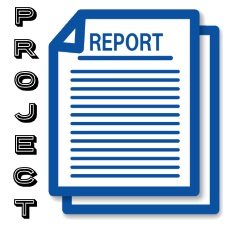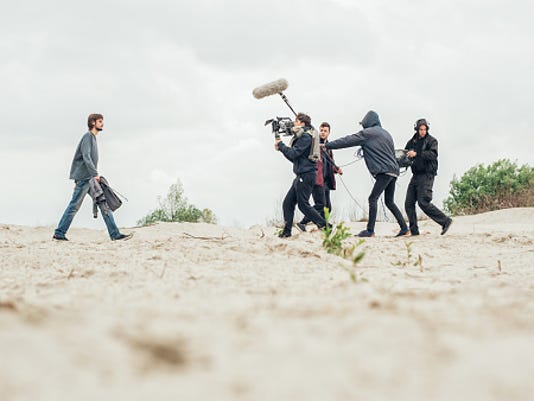All of the collaborative projects need to be submitted individually and need to include a personalised black slate.
Format:
- 10 Seconds Long
Should include:
- Name of the Film
- Logline in 50 words or less
- Your production role
Sorry

All of the collaborative projects need to be submitted individually and need to include a personalised black slate.
Should include:
Sorry
The final draft of your production report is due this Friday 5th April at 17.00.
It is essential that it is submitted at this time and there is no possibility of extension! It will be marked over the weekend, moderated on Monday 8th and final marks submitted to IB on Tuesday 9th April.
The production report should be formatted as follows:
A title page which should include:
Here is an example title page.
It is expected that the production report will include images of: development and planning documents, behind the scenes images from the filming days, screenshots from the film, screenshots from editing applications…
These images should include captions. For example:
‘Figure 1. Examples of preliminary colour correction’
Or
‘Figure 5. Screenshot of my work creating the opening titles’
These captions should be brief and contextualise the images.
They are not included in the overall word count.
Discussion is likely to evidence the creative work undertaken during the pre-production, production and post-production phases and the ways in which their production skills, techniques and/or approaches were effectively deployed in order to convey meaning and to contribute to the overall effectiveness of the film.
This section should begin with a clear statement of the core production team’s agreed intentions for the film.
Discussion is likely to evidence the student’s work beyond the one chosen film production role and their approaches to effective group work (through problem-solving, giving and receiving constructive feedback, supporting others, working flexibly, reliably and responsibly and so on). Reflecting on collaboration does not mean that students should see this as an opportunity to complain, blame or criticize the role of other core production team members. Students should cite informative moments and examples from within the completed film to support their reflection.
Here is an annotated example of a production report.
This exemplar would have received a top band mark
 Please redraft the second part of your production report based on feedback.
Please redraft the second part of your production report based on feedback.
You should also use this self assessment check list for each stage of your production report to make sure that you are covering the essentials
You should refer back to your creative intention within this section of the report and your decisions / revisions, should be referred back to that, as this is your overarching meaning.
Please include screenshots of your work in progress and pictures of planning documents.
Collaboration with my core production team (approx 200 words)
Creative work in my film production role (approx 200 words)
Friday 22nd March
Please note that we are obliged to mark this work and upload to IB by April 10th April. This means there are no extensions under any circumstances!
There will be a deadline every Friday for the edit to take shape.
Friday 15th March.
This draft should include:
Friday 22nd March
This draft should include:
You will receive teacher feedback on this edit
Friday 29th March
The final draft should be exported
Please remember you have a 500mb limit for this file.
Friday 22nd March
Draft 4 of the production report on Post Production
 Please redraft the second part of your production report based on feedback.
Please redraft the second part of your production report based on feedback.
You should also use this self assessment check list for each stage of your production report to make sure that you are covering the essentials
You should refer back to your creative intention within this section of the report and your decisions / revisions, should be referred back to that, as this is your overarching meaning.
Friday 8th March
 Please redraft the first part of your production report based on feedback.
Please redraft the first part of your production report based on feedback.
You should also use this self assessment check list for each stage of your production report to make sure that you are covering the essentials
Friday 15th February
This is the sort of detailed planning we need from every group…
To make sure you are ready for the shoot, have collaborated with your production team and prepared for your own production role you should complete the following tasks as a group and individually:
 Test your ideas.
Test your ideas.This should be done for independent study and your ideas should be based on examples taken from your shared vision document.
This is the job of the cinematographer & editor
You will have half a lesson to work with your teacher on presenting and developing your idea.
You need to bring the following to the meeting:
During the meeting you will have an opportunity to discuss your inspiration for the short film and explain the specific camera, editing & sound design techniques you wish to use.
The outcome of the meeting should be a shared creative intention that you can then adapt to reflect your production role.
The meeting will be filmed, so that you can review the discussion, creative intentions and next planning targets.
You will also need to discuss the narrative shape and the individual scenes in your short. Once agreed, you will need to complete a step outline for each scene.
Once you have got a more visual idea of your short it is time to start developing it in more depth and detail, considering what will happen step by step and what we SEE and HEAR how the scene will unfold.
Use this document to develop this for each scene. Once you have completed this you should start plotting out your short step by step using an extended step outline for each scene.
This work should be shared among the group with each person being responsible for drafting at least one step outline document, which they then bring back to the group to discuss.
If you have a director they have final editorial decision, if not, you will have to reach a compromise in the group.
An animatic is an animated storyboard. Images from the storyboards are brought into an editing program and are cut together with the correct timing and pace of the film. An animatic should include basic sound effects, dialogue recordings and temp soundtrack.
What is it used for?
Similar to storyboards, animatics are used for pre-visualizing the film before production starts. This is when you first get a sense of the pacing, the rhythm and the progression of your film.
We are not going to draw a complete storyboard, but will use a combination of drawn and found images to complete your animatic.
It will be the job of the cinematographer to find stills for the animatic and the job of the editor to cut them together. The sound designer will also put together a multi-track mix of music, dialogue and sound effect.
You can also use titles if you can’t find an appropriate image. These will be helpful in giving you a sense of timing. You could also use some images from location scouting.
This is a 2,000 word report which will be submitted in 5 sections:
The content of this report is worth up to 2/3 of your final mark for the collaborative project. There are no extensions on deadlines. We have to submit your film and the report to the IB by the end of this term!
This means you must submit the report in stages in order to get feedback.
Full guidance on the production report can be found here.
The first deadline is next Friday 25th January.
The production report will be submitted in two equal sections. Please complete the first 400 words on:
This section should reflect back on how you developed your idea and then how you worked as a group to refine and shape your shared vision.